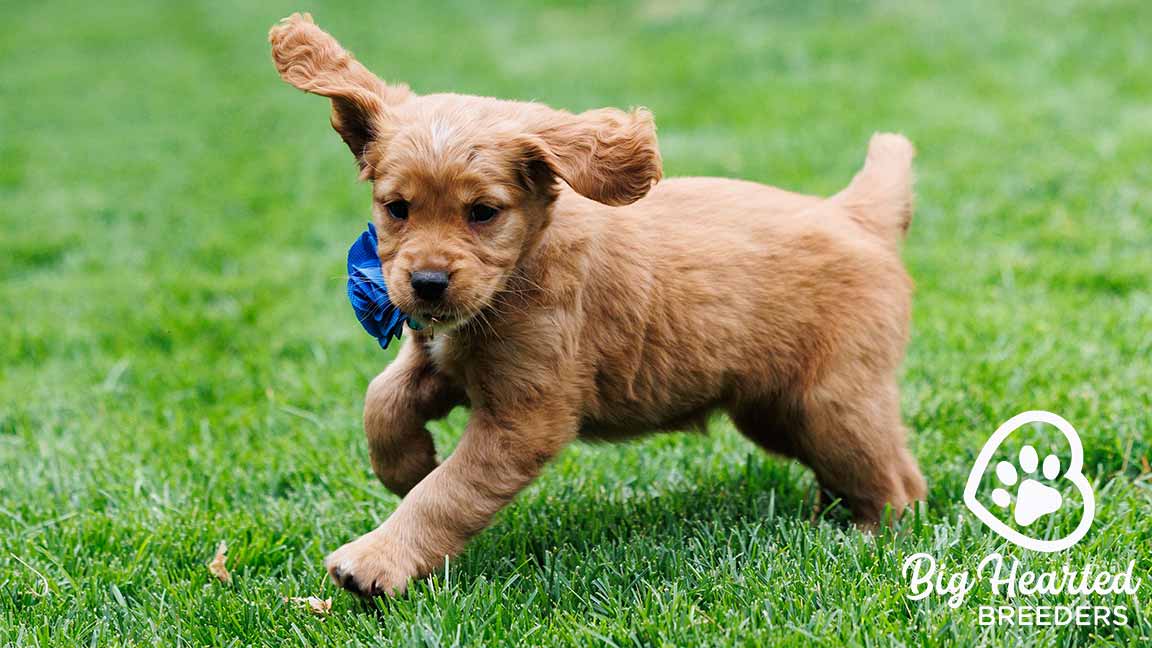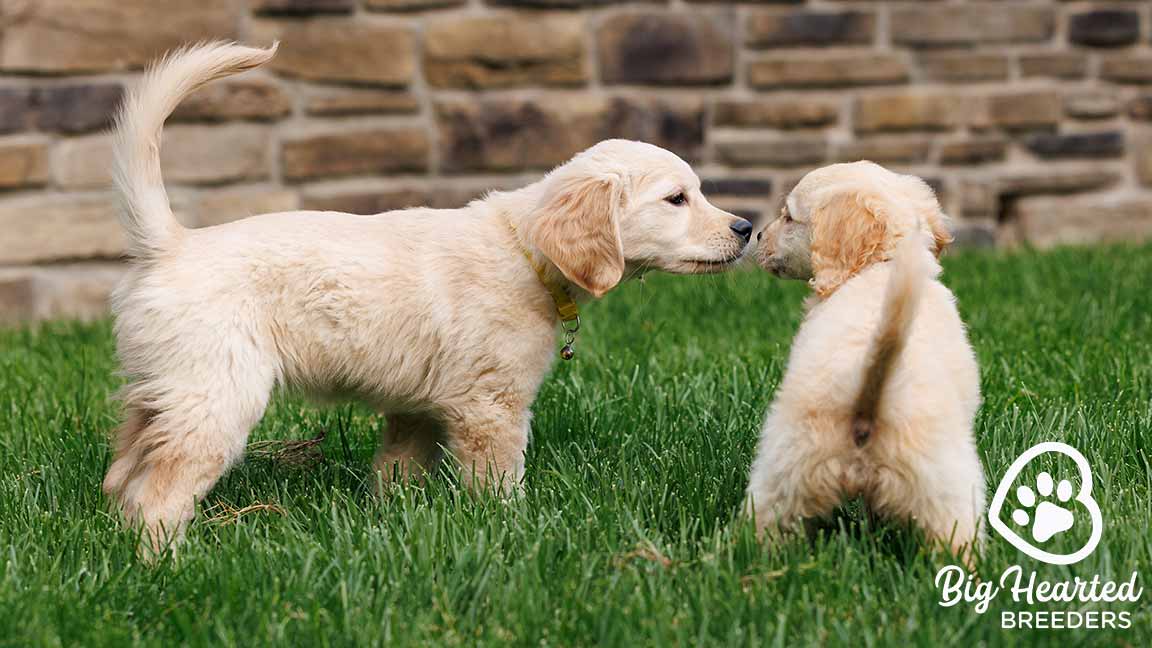How Often Should You Walk Your Dog? The Complete Guide
How Often Should You Walk Your Dog? The Complete Guide
Walking your dog is one of the simplest ways to keep them healthy, happy, and well-behaved. But how often should you walk your dog? The answer isn’t the same for every pup. Factors like age, breed, energy level, and even personality all play a role. At Big Hearted Breeders, we’ve seen firsthand how a consistent walking routine can help dogs thrive, both physically and mentally.
Whether your pup is a playful puppy, a full-grown mini Golden Retriever, or a gentle senior dog, understanding the ideal walking schedule and techniques will make walks more enjoyable for both of you. Let’s dive in.
Why Walking Is So Important

A walk isn’t just a bathroom break. Walking is a full-body workout and a mental adventure for your dog. Here are some of the top benefits:
- Physical exercise: Regular walks help maintain a healthy weight, build strong muscles, and promote cardiovascular health. Dogs who get adequate daily exercise are less likely to develop obesity-related problems.
- Mental stimulation: Dogs explore the world with their noses. Each scent, sight, and sound challenges their brains in ways that games and toys alone can’t replicate. A sniff-filled walk can be just as tiring as running around a yard.
- Behavior management: Dogs that get enough exercise are less likely to develop destructive habits like chewing furniture, excessive barking, or digging in the garden. Walking regularly helps redirect energy into positive behaviors.
- Bonding time: Walking together strengthens the bond between you and your dog while reinforcing training cues like “heel,” “sit,” and “stay.” It’s also a great opportunity for socialization when you meet other dogs and people.
Regular walks are not just beneficial, they’re essential for both mental and physical well-being.
How Often Should You Walk Your Dog?
There isn’t a one-size-fits-all answer, but here’s a helpful guideline based on age and lifestyle:
Puppies
Puppies are bundles of energy, but have short attention spans and developing joints. For young pups:
- Walks should be short, about 5–15 minutes per session.
- Multiple walks per day—3–5 times—are ideal.
- Include potty breaks, socialization, and gentle exposure to different sights and sounds.
- Keep in mind that early socialization is critical. Puppies exposed to safe environments, varied noises, and gentle handling often grow up more confident, reducing the likelihood of anxiety or fear-related behaviors.

Adult Dogs
Most adult dogs thrive with one or two longer walks per day:
- 30–60 minutes per walk, depending on breed and energy level.
- Mix in playtime, fetch, or training sessions to provide extra mental stimulation.
- Consistency is key. Dogs feel more secure with a predictable routine.
Senior Dogs
Older dogs may tire more quickly but still need daily walks:
- Shorter, slower walks are best—around 10–20 minutes, 1–2 times daily.
- Pay attention to mobility issues, arthritis, or breathing problems, and adjust the pace accordingly.
- Even short walks help maintain joint health and prevent weight gain.
Breed and Energy Level Considerations
Certain breeds, like mini Golden Retrievers, are energetic and thrive on regular walks and active play. Sporting breeds, herding breeds, and working dogs generally need more exercise than toy or low-energy breeds. Tailoring walking routines to breed-specific needs ensures your dog gets the right balance of physical activity and mental stimulation.
Tips for a Successful Walking Routine
Creating a walking routine that works for you and your dog takes a little planning, but it can make a big difference in behavior and happiness.

Stick to a Schedule
Dogs thrive on routine. Walking at roughly the same times each day helps them know what to expect, reducing anxiety and restlessness.
Mix Up the Routes
Exploring new streets, trails, or parks keeps walks interesting. Novel sights and smells stimulate your dog’s mind and prevent boredom.
Practice Leash Manners
Walking calmly on a leash not only makes walks safer but also helps manage energy. Training your dog to walk politely can prevent pulling, lunging, or reacting to distractions. Positive reinforcement, patience, and consistency are essential.
Incorporate Mental Stimulation
Bring along puzzle toys, scent games, or short training sessions during walks. Asking your dog to “sit,” “wait,” or “heel” intermittently keeps their mind engaged and makes the walk more rewarding.
Bring Essentials
Water, treats, and waste bags are a must, especially for longer walks. On hot days, make sure your dog stays hydrated and takes breaks in the shade.
Watch for Signs of Fatigue
Panting, lagging behind, limping, or whining can indicate your dog needs a break. Adjust the pace or shorten the walk if needed, especially for puppies and seniors.
Special Considerations
- Weather: Extreme heat or cold can make walking unsafe. Adjust times or routes to protect your dog.
- Health conditions: Dogs with joint problems, heart conditions, or respiratory issues may need modified walking routines. Consult your veterinarian if you have concerns.
- Puppy vaccinations: Ensure your puppy is fully vaccinated before exposing them to high-traffic areas or parks with unknown dogs.

Making Walks Fun for Both of You
Walks should be enjoyable for both you and your dog. Bring your sense of adventure, try new routes, and incorporate play breaks. Remember, a tired dog is often a happy dog, and a happy dog is more confident, calm, and well-behaved at home. Walking isn’t just exercise; it’s an opportunity for mental enrichment, bonding, and building a confident, well-adjusted dog.
FAQ
How long should I walk my dog each day?
Adult dogs typically need 30–60 minutes of walking daily, split into one or two walks. Puppies and seniors may require shorter, more frequent strolls.
Can backyard play replace walks?
Backyards provide exercise but cannot fully replace walks. Walks offer mental stimulation, socialization, and exposure to new environments that a yard alone cannot provide.
What if my dog pulls on the leash?
Practice positive reinforcement and use a proper harness. Consistent training and patience make leash walking more enjoyable for both of you.
How do I know if my dog needs more exercise?
Signs include restlessness, chewing, digging, or excessive barking. Adjust walks, playtime, and mental enrichment to meet their energy level.
Are daily walks enough for high-energy breeds?
High-energy breeds often need additional play, training, or mentally stimulating activities alongside walks to stay content and healthy.
Can early socialization help with walking routines?
Absolutely. Puppies exposed to various sights, sounds, and gentle handling early in life tend to walk calmly, respond well to new experiences, and enjoy exploring without fear or anxiety.





